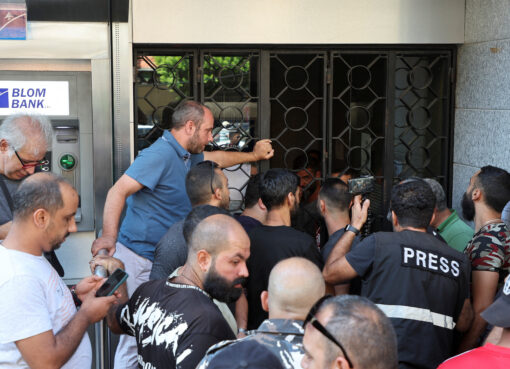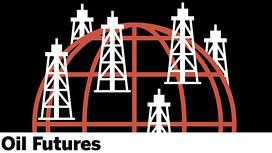The unexpected directive could spur progress toward ending the wasteful and environmentally damaging practice of flaring, but it also raises concerns for oil companies.
Kurdistan gives oil companies 18-month deadline to end gas flaring
A flare burns at the Taq Taq oil field in 2016. (STAFF/Iraq Oil Report)
By LIZZIE PORTER AND RAWAZ TAHIR of Iraq Oil Report
Published Thursday, July 29th, 2021
ERBIL – The Kurdistan Regional Government’s Ministry of Natural Resources (MNR) has issued a directive to field operators that they have 18 months to halt the flaring of associated gas that is produced along with crude oil.
The July 13 order, a copy of which was seen by Iraq Oil Report, is a move to end the wasteful and environmentally disastrous practice of burning gas and other byproducts of crude production. But it is also likely to raise concerns among the international oil companies (IOCs) developing Kurdistan’s oil fields, since the two-page letter does not address the key question of how the anti-flaring measures will affect the financial structure of projects where the MNR already owes hundreds of millions of dollars in backlogged invoices.
Three oil sector officials confirmed the authenticity of the order, which was signed by Kurdistan Regional Government (KRG) Minister of Natural Resources Kamal Atroshi.
Companies are required “with immediate effect” to take steps to end flaring, Atroshi writes, noting that the process of flaring gas is “strictly prohibited” under the KRG’s standard production sharing contracts and “shall be phased out ASAP.” The flaring of black oil or condensate is also “strictly prohibited,” the letter says, other than in “exceptional circumstances” as determined by the MNR.
Gas reinjection will form part of updated field development plans “and shall occur on a fast track basis,” Atroshi writes, instructing recipients to view the order as a “formal instruction from the MNR for all operators to proceed with the implementation of gas flaring process without the need of any further approval under the Management Committee (MC).”
The order gives operators up to 18 months to move from flaring gas to processing and re-injecting it in oil wells. It set an early target of 12 months for completion but it isn’t clear what the benefit would be to operators if they meet the earlier deadline.
Although some field operators have already made progress in reducing flaring, the practice is still widespread both in the Kurdistan region and especially in southern Iraq. Roughly half of the associated gas produced in southern oil fields is burned as waste, and Iraq is the world’s second-largest gas flarer after Russia, according to the World Bank.
Capturing associated gas requires extra infrastructure, but there are many incentives to incur those extra costs. Not only does flaring release carbon dioxide and other environmental pollutants, but it also wastes a valuable commodity: gas can be treated and used to fuel power plants and create petrochemicals; or it can be reinjected into oil wells, which can help maintain reservoir pressure and prolong a field’s productivity.
Some progress towards ending flaring in the Kurdistan region has been made. Since May, associated gas from the Gazprom-operated Sarqala field has been used as feedstock for a power plant built by the UK’s Aggreko. At the 150,000 bpd Khurmala Dome oil field, the KRG’s single largest producing field, just over 70 percent of the associated gas is captured. The field is operated by the Iraqi-Kurdish company KAR Group.
At the Tawke and Peshkabir fields, operator DNO of Norway already captures and reinjects gas instead of flaring it. The company said in January that from the middle of 2020 to the end of the year, a total of 2.4 billion cubic feet (bcf) of Peshkabir field gas that would otherwise have been flared was piped to the nearby Tawke field and reinjected into the field for pressure maintenance. This led to “an estimated 200,000 barrels of incremental oil recovery and 400,000 barrels of reduced field water production.”
Another 0.3 bcf of gas was reinjected into Peshkabir, DNO said. The captured gas equates to the reduction of greenhouse gas emissions in 2020 of 160,000 mt of CO2 equivalent while halving the carbon intensity of each barrel produced, it added.
International oil companies have come under increasing pressure from climate activists and shareholders to reduce the carbon footprint of their upstream oil and gas operations.
Operators in the KRG who want to improve their environmental credentials may in principle want to end flaring, and even welcome an indication from the MNR that it is serious about working with them to do so. But in practice, it is not as straightforward. The investment needed to install gas processing and re-injection equipment would pose an additional financial burden and the ministry’s directive does not say whether or not operators will be able to recover their costs.
Iraq Oil Report attempted to contact the MNR and other KRG officials for additional information and clarifications about the order, but they could not be reached for comment.
Multiple industry officials said the order had taken operators by surprise, as they did not know of any prior consultation with companies. The directive came in the form of a pro forma letter addressed to “Dear Sirs” rather than individual companies.
Oil and gas companies operating in Iraqi Kurdistan are already struggling with late payments by the KRG as they recover from the disruption to their operations last year by the coronavirus pandemic. They are unlikely to be eager to take on the costs of extra gas capture infrastructure without a clear picture of whether and how they will be repaid.
Two oil sector officials in the Kurdistan region described the extent of the work needed to install equipment to capture and treat the associated gas.
One official at the Taq Taq oil field, operated by a consortium led by Genel Energy, described the request as “not even financially feasible at this stage” because the processing the gas would require the installation of a sulfur recovery unit and injection of “expensive chemical materials” to treat the gas. “It will add to the already exhausting cost,” the official said.
A second oil sector official said that work required to eliminate flaring generally requires installation of equipment to process and compress gas as well as reinjection lines.
There has been speculation that the July 13 order may be a prequel to the introduction of some form of a carbon tax. The letter says the MNR is considering a gas flaring surcharge in the form of a “carbon tax and Carbon (CO2) Environmental clean-up fund.”
This is not the first time that the MNR has attempted to end flaring. A KRG official said in 2019 that IOCs had been given an 18-month deadline to find alternative solutions, but they were eventually granted an extension.








Comment here